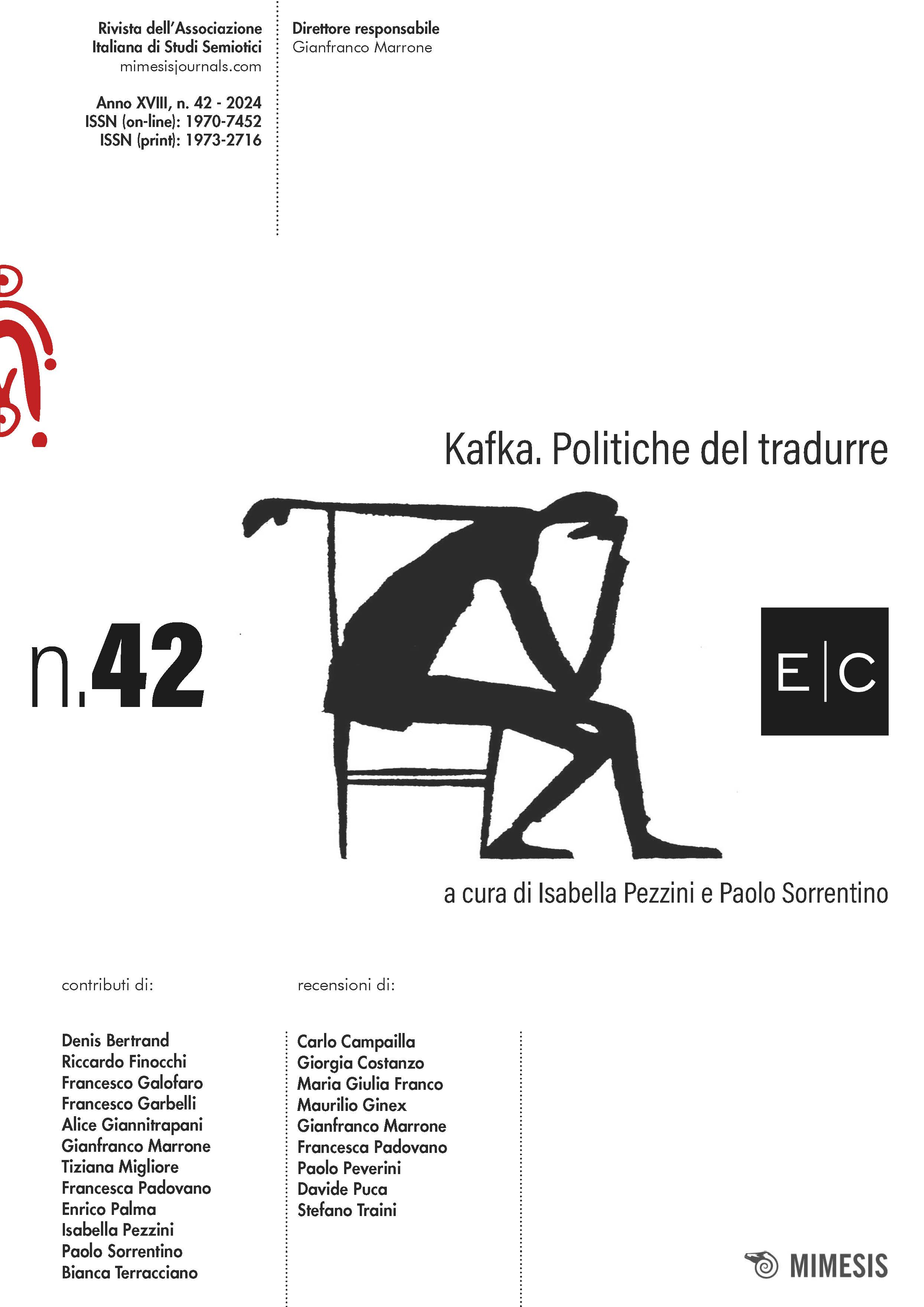Franz Kafka, or on writing after Terpsichore
Abstract
In this paper, I will contend that Franz Kafka’s use of language primarily follows a choral model. This stylistic choice matters in the context of Kafkian struggle to accomplish the purest expression of being in written form: since Kafka believes that language is bound to produce a false and unsuccessful representation of reality if it rests on defined grammatical uses, he borrows from choral dance a compositional model in order to implement an anti-grammatical fashion to write in, as the only option to make language enact truth. I will claim that a theoretical reconstruction of this model, and a discussion of the semiotic counterparts of its elements, also matters in the context of translation of Kafka’s work. Translating Kafka properly would thus mean to convey the salient traits of his use of German to cope with the choral model, i.e. prosody, figural clusters, and harmony, and the overall tone of sublimity and comedy. Then, it would result in a prudent exercise of the target language, with special attention to its intersemiotic trasmutative relationship to choral gestures.



